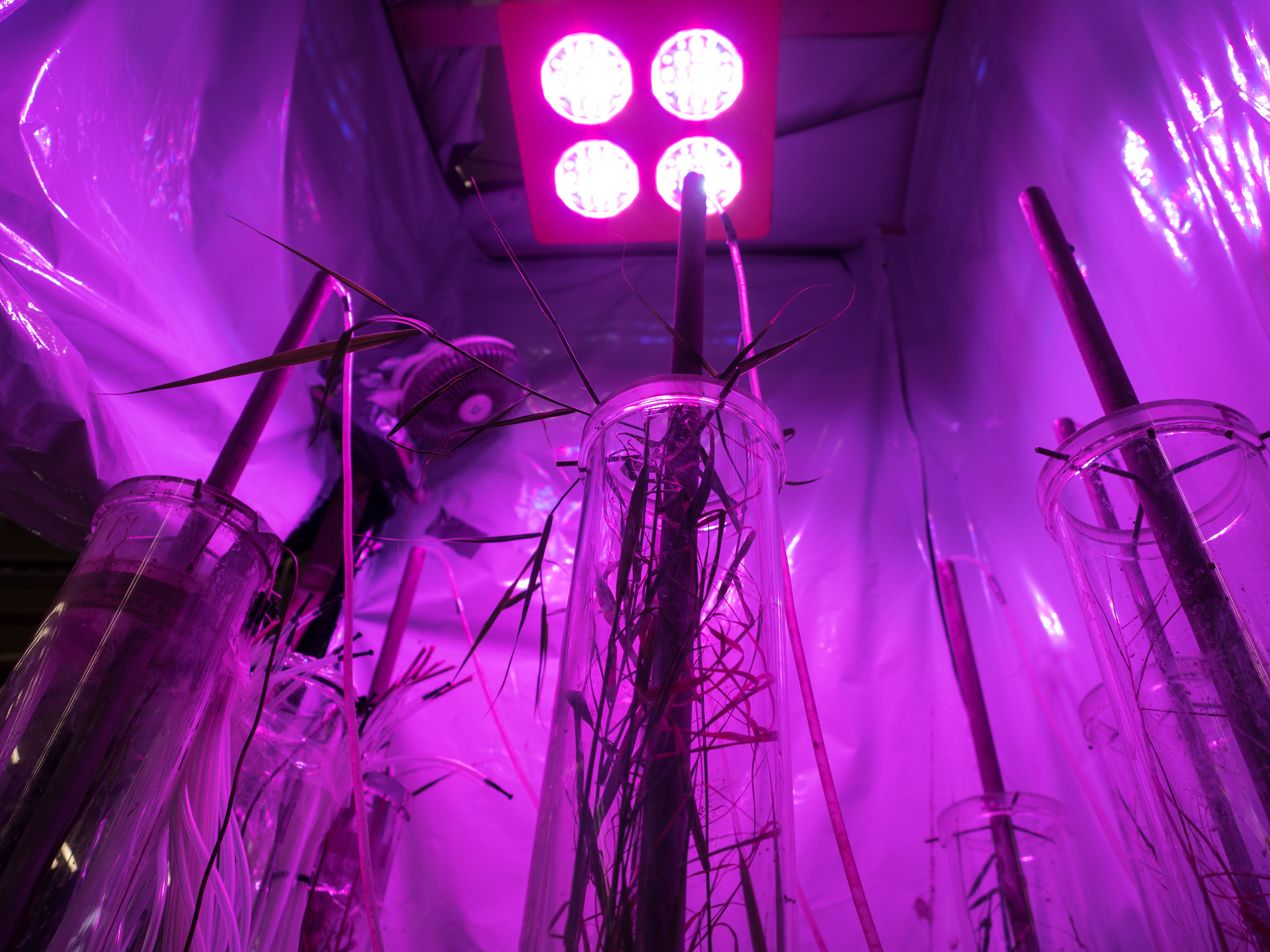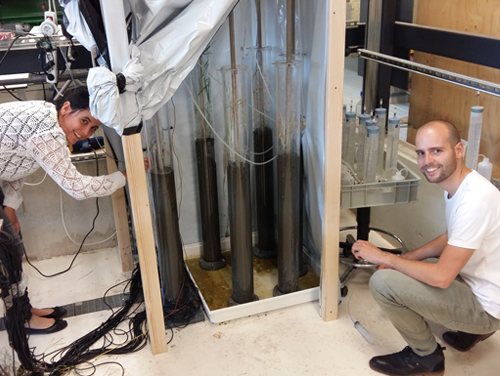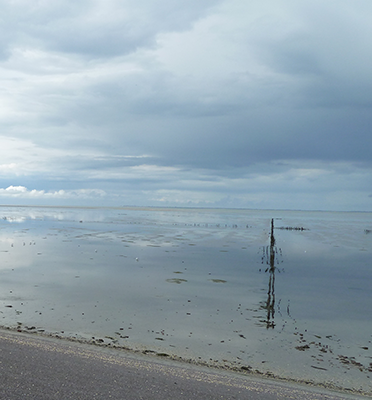Markermeer, a manmade lake in the North of Holland, functions as a freshwater reservoir and a buffer against floodwaters and droughts. Its 680 sq kilometres have a predominantly soft mud layer at the lake’s bed. Due to its shallow depth of 3 to 5 meters, the wind-induced waves are strong enough already at low wind speeds, to move the soft mud through the water. The dam, connecting Lelystad and Enkhuizen, add to the trapped sediment causing turbidity. The severe turbidity hampers light penetration through water and the overall ecological development. Natuurmonumenten and its consortium partners (Boskalis, Van Oord, Royal Haskoningh DHV, Deltares and Alterra) are committed to bringing life back to this lake. By removing the mud layer from the lake’s bed and re-using the soft sediment to build wetlands, they are expecting to transform a part of the lake into the new nature reserve ‘Marker Wadden’.
PhD students Maria Barciela Rial (TU Delft) and Rémon Saaltink (University of Utrecht) are excited to be part of this large scientific project: “It is like building wetlands with low fat yoghurt. To overcome the challenges associated with the building material, we use natural processes that are freely available and that will accelerate this ecosystem development. We do not add any artificial elements such as constructed walls.” Rémon and Maria study the physical and ecological processes that take place that control the consolidation of fresh mud. The combination of Maria’s in-depth knowledge on mud sediment physics and Rémon’s specialism on the two-way interaction between plants and soil holds the promise of jointly coming up with very valuable insights that may lead to a model for building wetlands with soft mud all around the world.
Mud is abundantly available worldwide. It consists of water, fine clay and very small particles of organic matter. This makes handling this soft material complex because both physical and chemical processes play a role. Strengthening a mud layer by artificial drainage is costly. Rémon and Maria emphasise that nature provides a drainage service also: “Plants extract water from the soil through their roots.” Plants that can grow on soft mud influence the sediment property and vice versa. The two researchers have an innovative solution for converting the soft material into a stable foundation for wetlands: “Our joint research focuses on how we can use this feedback mechanism of plants for mud consolidation. We expect that reed (Phragmites australis), a common species growing naturally at the Markermeer, can function as the ecological engineering species to enhance consolidation.” For stabilising the sediment within this project, it is important that the reed is growing fast. Because the vegetation also attenuates waves and hence, prevents erosion.
“To study the workings of this free service of nature, we have designed a lab experiment to measure the amount of water plants take up from the sediment and relate this to pressure differences in the sediment column. As roots grow, pressure differences in the column are expected to change through time. Therefore, we want to relate the water loss, the pressure difference per depth to the amount of roots in the soil, as an indicator of the capacity of sediment consolidation.” For this, Maria and Rémon are conducting a small-scale pilot in the TU Delft Waterlab. “Our research requires highly technical sensors and measurement systems on the pressure of water in the soil and release of water. The highly-trained Waterlab technicians and the TU Delft workshop DEMO built the columns and the measuring systems that were required. With these innovative adapted pressure sensors, this unprecedented experiment has become possible.”
To have a clear indication of root growth alone, the lab experiment excludes influences such as temperature differences, light hours and climate that takes place outside in the wild. “We installed large columns (130cm) and planted three reed seedlings in each column.” Each month, Rémon selects one column and he determines the amount of root biomass and root surface area per unit of depth (f.e. from 0-10 cm, from 10 –20 cm, from 20-30cm and so on). This leads to a depth profile of roots through time.“ This will enable us to design a model that makes it possible to predict how long it will take for soft mud to consolidate with and without reed. We aim to get these entangled factors moulded into reliable modelling, that incorporates factors as the consolidation of wetlands parts with and also without growing reed. We intend to upscale the model to predict the consolidation time at the Marker Wadden.”
“With this experiment, we hope to showcase the eco-engineering capabilities of reed for consolidating soft mud.” Considering soft mud as building material for wetland construction is unprecedented. The Marker Wadden, comprising c. 10.000 ha of wetland in the near future, represents one of the first projects in the world using mud as a filling material and the first one doing it under the Building with Nature approach instead of using traditional engineering practices. The ultimate goal objective is that the wetlands have such a solid sediment, that goose can walk on it, and various plants can thrive. So that the Marker Wadden turn into a birds paradise, based on mud that was initially as soft as yoghurt.






